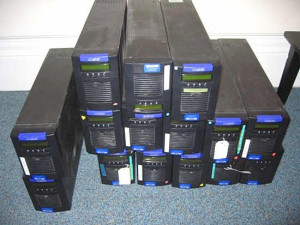Everybody is talking cloud – every startup I meet, every CTO I work with, and all the software vendors are now cloud-oriented.
But when it comes to implementation it is a different story all together – most companies realize the value of the cloud (or at least say they do) but very few are ready for the paradigm shift – especially when it comes to the pricing model.
How do we do pricing on premise?
Before the cloud, architects and IT engineers used to perform an activity called “sizing exercise” or ”sizing estimation” before buying the actual servers for production. These activities are based on past experience, combined with buffers and optimism:
These exercises would go (very generally) like this:
Sizing exercise –
1) We think we are going to have around 10,000 users per day
2) On the weekends we hope are going to spike to 50,000 users per day
3) The system should support at most 100,000 user per day
4) A user views 3 pages in average
5) …
6) …
7) We estimate that a server would hold 1000 users per day
Conclusion – we need 10 servers, a nifty Database and 100GB of storage
Production environment cost is $35K
The key here is that on premise (in a non-virtualized environment) it is hard and expensive to provision new servers. That is why we need to size properly and put the cost in the IT budget in advance. These costs are Capital expenditures (expenditures creating future benefits)
Cloud advocates would say that these calculations are limited and do not take under account things like backup, IT cost, electricity, and other run-time costs. But in typical Sizing exercise these services are taken or granted.
How do we do pricing in the cloud?
In the cloud we do not need to do this initial “sizing exercise”, we start with one or two servers and if we need more we just easily provision more as we see fit. But when it comes to pricing we need to start thinking in terms of usage (I call it “metering exercise”):
Metering exercise –
1) How much bandwidth are we going to consume?
2) How much storage and storage transaction are we using?
3) How many CPU hours do we need?
4) Are there periods where we need more/less CPUs
5) ….
6) ….
7) Our database is going to start with 100MB of data and grow as time pass
Conclusion –We estimate that the initially we would be spending $150 per month with a growth rate of 5% per month.
Pricing in the cloud is based on actual usage – meaning you only provision what you need right now and you only pay for what you use. This cost is an operating expenditure (an ongoing cost for running a product)
The Needed Paradigm Shift
The problem is that most people are used to “sizing exercise” and Capital expenditures. They want to put something in the budget and forget about it – even if it costs much more. Moreover, some IT pros are not experienced in these “metering exercises” and often get it wrong the first couple of times. I think that making this error is a learning exercise and you often get it right after a few times -“metering exercises” errors often cost much less than “sizing exercise” errors and are more easily corrected.
Some IT organization try to do “sizing exercise” for the cloud – that is a common pitfall these days because you loss the elasticity and “pay for what you use” and in most cases pay much more that you should have- and even if you do this “sizing exercise” you still do not have the predictability that you are used to.
IT managers need to embrace the shift, they need to understand that pricing is changing from “buy” to “lease”, and that they should now treat compute costs in the same way they manage their electric bill or cellular cost – because that is the way of the cloud…








